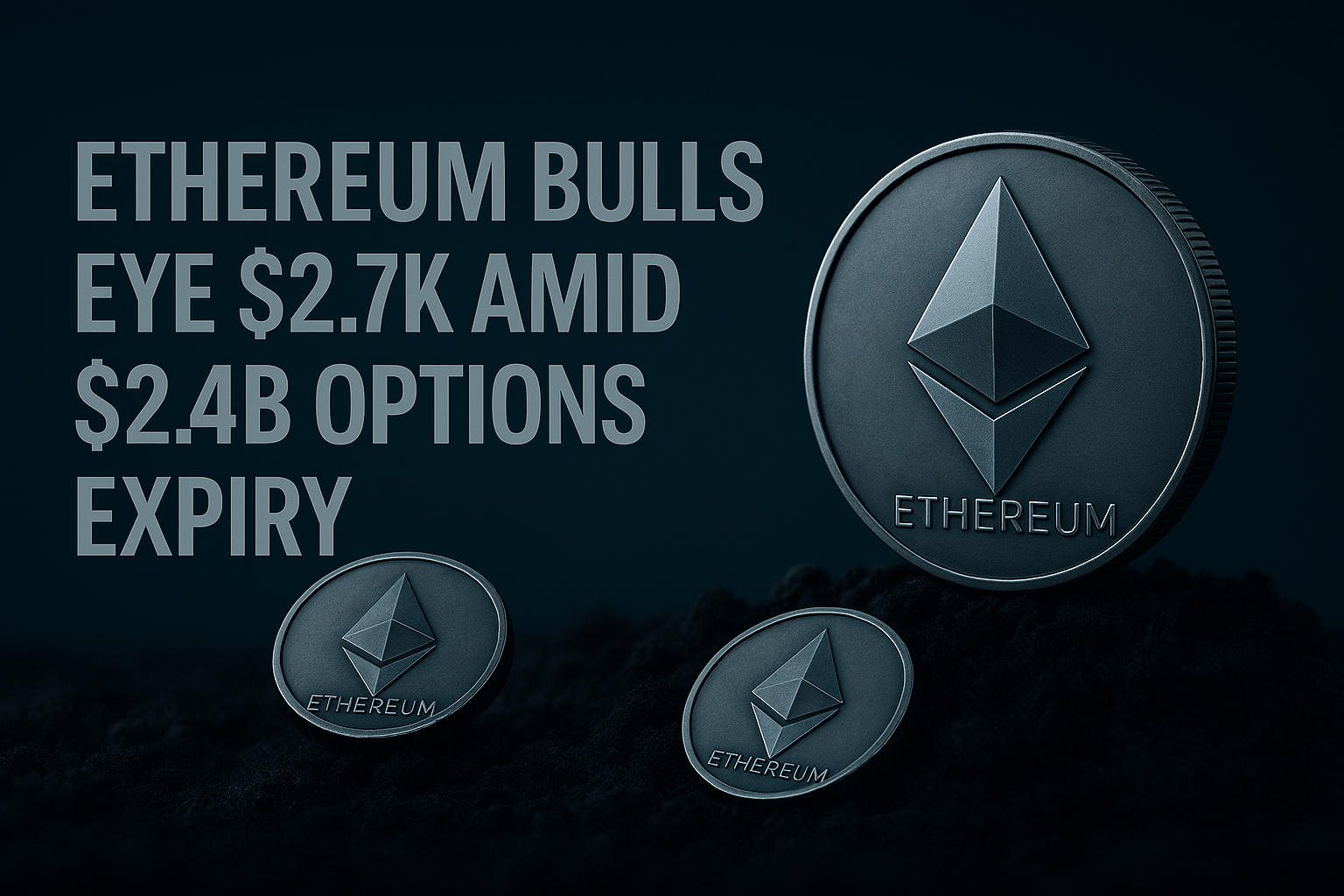
ETH Options Expiry Sparks Volatility
As the Ethereum (ETH) market braces for a major $2.4 billion options expiry on May 30, traders and investors are closely watching the price action. This high-stakes event could influence whether ETH breaks above $2,700, a level it hasn’t seen in over three months. While call options outweigh puts significantly, the outcome may depend more on macroeconomic factors and institutional strategy than market sentiment alone.
With Ethereum’s price currently hovering around $2,730, bulls are keen to maintain momentum above the critical $2,600 support. If successful, they could force the majority of bearish (put) contracts to expire worthless. According to open interest data, 97% of all put options are set at $2,600 or lower, leaving them unprofitable if ETH closes above that line.
Still, even a favorable expiry outcome won’t guarantee a rally. Ether’s on-chain activity and network fundamentals remain weak compared to rivals like Solana, BNB Chain, and Tron, raising concerns about long-term sustainability despite recent price gains.
Bullish Sentiment Faces Headwinds
Ethereum’s underperformance in 2025 is notable: it’s still down 21% year-to-date, while the broader cryptocurrency market has posted a 5% gain. The issue isn’t lack of interest—Ethereum ETFs in the U.S. have seen $287 million in net inflows between May 19 and 27, mostly from institutional players—but rather, a slowdown in network usage and fee generation.
In fact, Ethereum no longer ranks among the top ten protocols in fee revenue, reflecting a concerning decline in demand for block space. This drop leads to a supply imbalance, pushing the network into inflationary territory at a time when demand should ideally be increasing.
Despite these challenges, the ETH options market shows clear bullish pressure. The imbalance between calls and puts paints a picture of optimism—yet many traders use complex strategies that hedge or neutralize directional risk. As a result, high call open interest doesn’t always translate into aggressive buying behavior post-expiry.
Strike Zones Show Bullish Edge
The May 30 expiry presents a unique situation where calls vastly outweigh puts, giving bulls a theoretical edge—if ETH holds key levels. Let’s break down the likely outcomes based on price zones:
- $2,300 to $2,500: $420M calls vs. $220M puts – $200M net call advantage
- $2,500 to $2,600: $500M calls vs. $130M puts – $370M net call advantage
- $2,600 to $2,700: $590M calls vs. $35M puts – $555M net call advantage
- $2,700 to $2,900: $780M calls vs. $10M puts – $770M net call advantage
The data shows that a price close above $2,700 would deliver the most bullish payoff, suggesting strong incentives for traders to defend this range. However, these gains are theoretical and don’t account for multi-leg strategies or futures hedging, which can dampen the impact of such imbalances.
Moreover, options traders may not reinvest post-expiry unless broader conditions remain favorable. With S&P 500 correlations still strong, macroeconomic indicators like inflation data and corporate earnings will play a key role in guiding ETH price action in early June.
Macro Trends Remain Decisive
The outcome of the ETH options expiry may offer short-term price movement, but sustainable growth depends on broader crypto market dynamics and macroeconomic factors. The correlation between Ethereum and traditional financial markets, especially U.S. equities, implies that Fed policy, interest rates, and economic data releases remain key drivers.
In the short term, bulls are betting big on a rally above $2,700, backed by a heavily call-weighted options landscape. However, Ethereum’s weak fundamentals—like sluggish deposits, low protocol fees, and declining user activity—could cap potential gains. Unless the network regains dominance in decentralized application (dApp) usage and developer activity, its relative weakness could persist even with temporary price spikes.
That said, Ethereum’s unique position as the only altcoin with a U.S.-approved spot ETF does provide a potential long-term edge. If institutional inflows continue and regulatory clarity improves, Ether may reclaim its leadership in the smart contract space.
Conclusion
While the $2.4B ETH options expiry sets the stage for bullish momentum, the rally to $2,700 is not guaranteed. Market sentiment leans positive, especially as puts stand to expire worthless. Yet Ethereum’s underlying fundamentals and the broader economic climate will likely determine whether bulls can sustain upward pressure—or if macro forces will drag prices back down.

